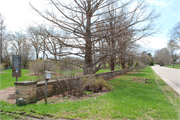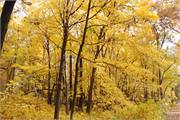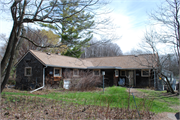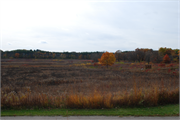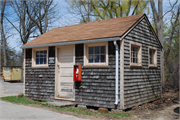University of Wisconsin Arboretum
1207 Seminole Highway, Madison, Dane County
Dates of Construction: ca. 1927 – 1943
The University of Wisconsin Arboretum occupies 1,280 acres wrapping around the south, east, and west shores of Lake Wingra. A portion of the Arboretum extends south past the Beltline Highway. The Arboretum site was mostly planned between 1933 and 1943, while the buildings and structures that contribute to the Arboretum’s significance were erected between ca. 1927 and 1940. Between 1935 and 1941, members of the Civilian Conservation Corps provided the labor. The Arboretum Committee (composed of University of Wisconsin faculty specializing in botany, horticulture, zoology, forestry, landscape architecture, and wildlife management) worked with Aldo Leopold, the Arboretum’s first research director, and G. William Longenecker, the Arboretum’s first executive director, in guiding the development of the Arboretum. These men envisioned the Arboretum as a place that not only would provide the opportunity for the scientific study of a wide variety of trees and plants (as an arboretum traditionally did), but would also serve as a laboratory for reestablishing native plant-animal communities (now called “ecological restoration”) on land that had been put into agricultural use. Both types of landscapes have been created in the Arboretum. Some 1,000 acres are dedicated to native plant-animal communities from forests, prairies, wetlands, and savannas, while the remainder is in horticultural plantings (traditional of arboreta), or in administrative and service use. Native plant-animal communities in the Arboretum established prior to 1943 include the Leopold Pines, the Wingra Woods, the Gallistel Woods, the Curtis Prairie, the Gardner Marsh, the Evjue Pines, and the Green Prairie. The Longenecker Gardens and the Stevens Memorial Aquatic Garden are horticultural plantings that predate 1943. Three areas of the Arboretum represent remnants of the pre-Euro-American settlement landscape: the Noe Woods, with its forest of black and white oaks; the Wingra Marsh; and the Wingra Fen.
The University of Wisconsin Arboretum is nationally significant in conservation as the site of the first experiments in the ecological restoration of plant-animal communities in the world. The Arboretum maintains the world’s oldest collection of ecologically-restored plant-animal communities. Research and experimentation carried out at the Arboretum beginning in 1934 pioneered and refined techniques and procedures for restoring and managing many different plant-animal communities from Wisconsin forests, prairies, and wetlands. These have been disseminated through technical and popular journals, and through the academic and professional careers of the many graduates of the University of Wisconsin in conservation-related fields. The plant-animal communities themselves have served as models, inspiring other ecological restoration projects (especially prairies), and have provided seeds to other arboreta and botanical gardens worldwide. Ecological restoration was slow to gain acceptance until the modern environmental movement of the late 1960s, with its dual aims of preserving natural areas and healing degraded land, brought ecological restoration into the mainstream in the 1970s. Ecological restoration is now regarded as best practice in land management for both restored and natural landscapes.
The Arboretum also gains local significance for its concentration of Rustic style buildings and structures, built between ca. 1927 and 1940. |

